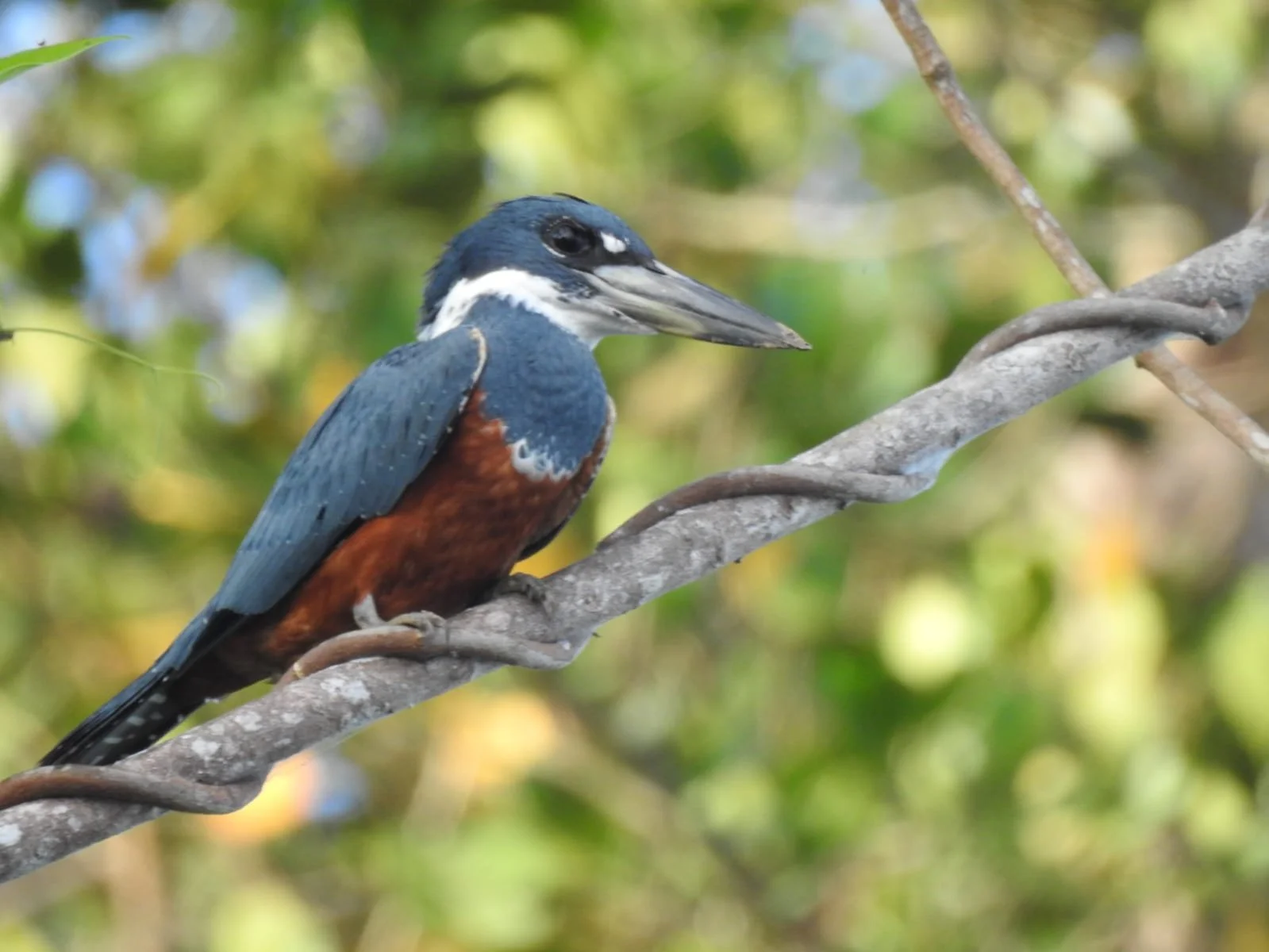Ringed king fisher
The Ringed Kingfisher is the largest kingfisher in the Americas , having a wingspan of 16-18 inches and a wingspan of 25-29 inches. They are bluish grey on their backs and necks. The male ringed kingfisher have rusty brown plumage on their undersides while females have a bluish-gray band across the upper breast, separated by a white band across the lower breast. They have large heads with long , straight bills that are dagger like with a sharp tip that is usually dark, as well as, dark brown irises with a white total spot near the eye. They have short legs and syndactyl feet, meaning the toes are joined for part of their length.
The ringed kingfisher are found in freshwater and marine habitats all across the Americas , from Texas to South America. They prefer areas with clear water near rivers, streams , ponds and lakes and estuaries, as well as, coastal shorelines and some islands. Kingfishers prefer water because it is their primary hunting ground for fish and other aquatic prey. They have evolved to be highly specialized hunters in aquatic environments , using the clear water for spotting prey and nearby perches for diving and catching food. Kingfishers rely on perches near the waters edge to spot the fish and aquatic animals. They then dive head first into the water to catch their prey
Ringed kingfishers mostly eat freshwater fish, but are also known to eat crustaceans, reptiles , amphibians , humming birds and large insects. They can consume fish that are nearly 8 inches long.Their keen eyes can spot prey at some distance. They capture prey with the bill using impressive dives from above or an angle. Usually only the bill and head enter the water, after which the bird rapidly ascends to its perch.
Ringed kingfishers are generally solitary birds outside of the breeding season, but they are known to interact with each other during the nesting period and sometimes outside of it. They are extremely territorial, especially around their nests and burrows, as well as, good food sources. Ringed kingfishers daily lives revolve around foraging and territorial defense. They have a range of distinct calls symbolizing communication, territoriality and even potential conflict. The calls vary from rattles too screams for warning of potential intruders. They mark and defend their grounds with aeriel chases as well.
As for nesting and breeding, when courting, males may present females with fish. Both sexes dig a tunes-like burrow in the bank, with a nesting chamber at the end. Burrows can be 9 feet long with an entrance hole well above the high-water mark usually about 5 inches in diameter. When changing places in the burrow, ringed kingfishers usually give a short call to alert the males at the nest. They usually stay with the young for a month before the family disperses. Both, defending the nest while they are present .
Although there are few reported intrusion issues , predators include larger raptors, including white-tailed hawks, bald eagles, golden eagles and peregrine falcons. In addition, the nests can be vulnerable to predators like skunks, minks , raccoons and black rattle snakes.

